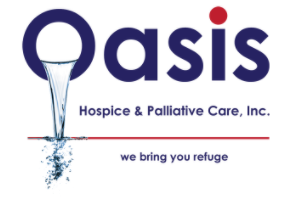Many wonder whether choosing hospice care means giving up hope or choosing death. Hospice has nothing to do with this. Does hospice mean death?

Hospice Meaning
Here’s what you should know about the goals and benefits of hospice care. Understanding what hospice is and clearing up any misconceptions can help you decide if it is the right choice for you or a loved one.
Hospice’s Mission
Patients and their families frequently choose hospice care when a person’s disease is determined to be incurable and thus terminal. Instead of focusing on curative treatments (such as chemotherapy or surgery), hospice treats the symptoms of an illness, such as pain, nausea, or shortness of breath. Hospice programs may also provide social workers and spiritual counselors to help patients cope with their prognosis and mend relationships between the patient and their loved ones. The Medicare Hospice Benefit pays for most hospice care (MHB). The MHB provides four levels of care, including:
- Routine home care includes intermittent nursing services, medical supplies, and physical therapy, among other services provided in the patient’s home.
- General inpatient hospice care includes care for distressing symptoms that can only be provided in a hospital or other setting where intensive nursing and other support is available outside the home.
- Respite care is short-term inpatient care intended to relieve the primary caregiver temporarily.
- Continuous home care: Continuous home care assists the patient and caregiver during brief periods of crisis by providing nursing, home health aide, and housekeeping services from 8 to 24 hours a day.
Redefining Hope
People who choose hospice care are not giving up hope but are redefining it. Although there is no longer a chance of curing their illness, they channel their hope into mending and restoring relationships, spending quality time with those they love, and finding peace and comfort. Some people may turn to their religious faith at this time to settle financial matters or other aspects of their lives that they do not want to leave unresolved. Are you looking for palliative care? Then contact oasis hospice.
Most patients spend about three weeks in hospice, but families may feel that the person should have entered hospice earlier in the disease process and had more time to benefit from it.
What Hospice Looks Like
Hospice is not a physical location but rather an overall philosophy of caring for people nearing the end of their lives. Having said that, free-standing facilities provide hospice care when someone cannot live in their home. In either case, hospice typically entails a team of nurses, social workers, health aides, and others.
Oasis Hospice Care
Most hospice care is provided in the patient’s home, whether it is their private home, a nursing home, or an assisted living complex. Being surrounded by one’s familiar belongings and surroundings is a core tenet of hospice care.
Hospice Care Facilities
Free-standing hospice facilities may be operated by a hospice agency that provides in-home care or is independently owned. A free-standing hospice may be a good option for patients who do not have caregivers to care for them at home or who require more advanced physical care 24 hours a day, seven days a week.
Choosing Hospice Does Not Mean Choosing Death
Choosing hospice means focusing on living as fully and comfortably as possible during the time you have left. People who qualify for hospice are usually expected to die within six months or less, but this does not mean death is their primary focus. Many people live for much longer than six months. You can stop and restart hospice care at any time. Most people who choose hospice have already been through a lot. Multiple hospitalizations, chemotherapy and radiation, and invasive tests and treatments can leave patients feeling sick and tired. Hospice care can keep people from dying in pain and exhaustion.
Hospice care, however, is not limited to cancer patients. Hospice patients frequently have medical conditions such as dementia, heart, liver, kidney, or lung disease. By choosing hospice, patients focus on the quality of their lives rather than how long they can live, especially if living longer means living with stress and not having time to engage in the activities that truly matter. With this perspective in mind, it’s clear that selecting hospice is about prioritizing quality over quantity. People frequently confuse hospice and palliative care. The goal of palliative care is to alleviate pain. It can be given anytime during an illness, even with curative treatments. Palliative care is one aspect of hospice care, but curative treatments have been discontinued in hospice, and the patient’s life expectancy is six months or less.
What Hospice Allows
Hospice patients who are still mobile and energetic may use the time previously consumed by doctor’s appointments and hospital stays to take family vacations, travel to places they’ve always wanted to see, and enjoy the company of loved ones. If and when a patient is no longer able to leave home (or a hospice facility), the hope is that the patient will be able to spend meaningful time with the important people in their lives while leaving much of the hands-on caregiving to the hospice team, who can assist with bathing the patient, administering medications, preparing food, and even assisting with paperwork. Patients in hospice care have access to healthcare professionals who are experts in pain management and the care and medications that can alleviate discomfort. Social workers and chaplains offer dying patients emotional, social, and spiritual support. As a person nears the end of their life, they may be concerned about what will happen after they die. They may also have “unfinished business” that they wish to complete. Social workers and spiritual counselors can assist with this and let go of any guilt or shame they may feel about life events.
A Word from Oasis Hospice
Finally, only you can choose when and where you want to spend your final days. You may have accepted that additional medical treatment will not cure your illness and that you do not want to die in a hospital. You can stay in familiar surroundings with the people who are important to you if you choose hospice care. While choosing hospice care implies that you have accepted that your illness is no longer curable, it does not have to imply that you have given up hope. Oasis Hospice is known as one of the best hospices. Learn more about understanding the stages of death in another post. You can contact us at 708-564-4838.

